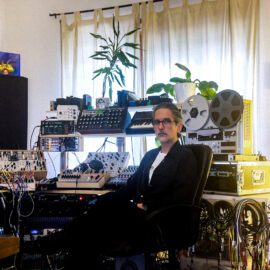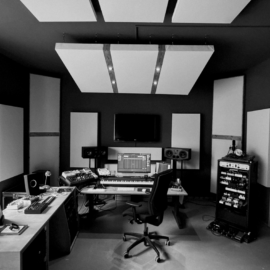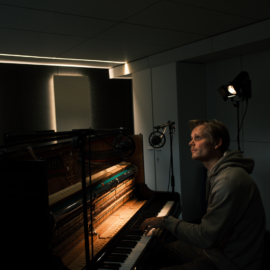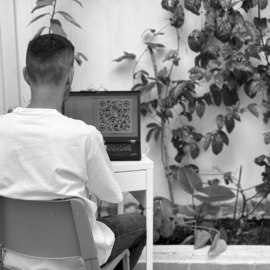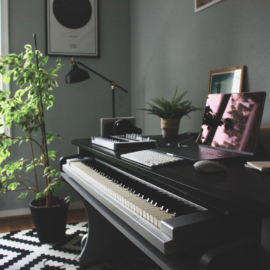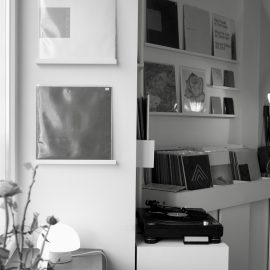Let’s start at the very beginning. Can you tell us how you got involved in composing, and what was your very first piece of gear?
For both, Daniel and I, we got into guitar pedals starting out and we began looking for wild sounds very early on. Daniel started off with a reverb Boss pedal (RV2) and a four-track (slowing and warping tracks) and for me, my first amp was a vintage Magnatone Amp with a built-in Leslie type speaker playing one chord over and over again listening to the slow flutter and then tuning my guitar to DADGAD was monumental for me… So both of us love processing sounds into different elements and different colors. From those beginnings, we both went through many different projects growing up and just seeking out varied musical projects from bands to theatre to films and just finding creative communities to learn and be inspired by. So we both launched into composing from the moment we started getting into making music as kids.
How many different studio iterations have you gone through, and what does your final setup look like right now?
For us, we have moved around a lot as individuals. We have both had countless workspaces here in LA. So we have always had to make the best of the space wherever we were at the time. We are always trying to use the particulars of these new spaces as characters in our composing. It’s just a constant seeking for new ideas, new sounds, new ways of sculpting, treating our rooms, processing sounds into musical moments and stories. Perhaps these constant changes have inspired our ways of composing as well.
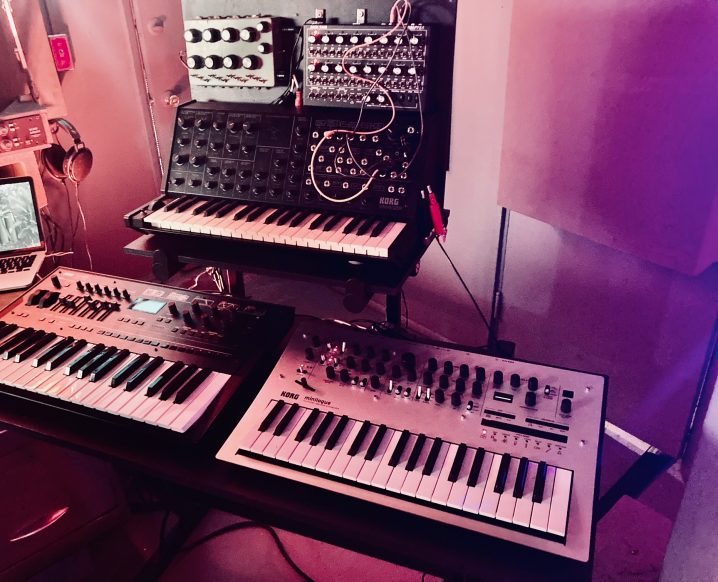
Tell us about your favorite piece of hardware.
Currently, we are into the Deckard’s Dream Synth, the Strega, Heritage Audio HA 73 EQ for some distortion, The Moog Grandmother, Korg’s OP-6 and Wavestate, and pedals like the Space by Eventide, the Chase Bliss Mood, and the Meris Polymoon
And what about the software that you use for production?
We primarily use logic as well as some Ableton as a DAW. For other software we use Fabfilter, Niki Romero KiKstart, GRM tools. However, we mainly process through pedals and other hardware. The flexibility of technology is wonderful but the combination of analog with digital elements is something that really brought the Heliochrysum sound to life.
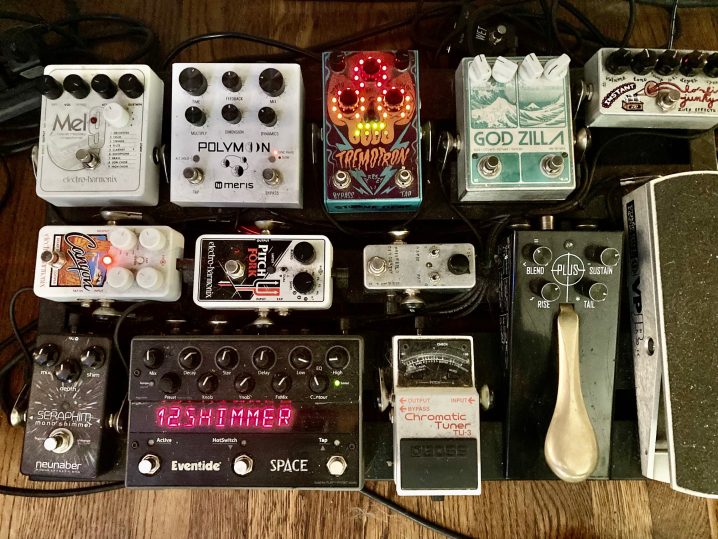
Is there a particular piece of gear that you’re just dying to get your hands on and do you think one day you’ll have it?
I would really love to get a Steinway Grand Piano but it’s doubtful I’ll ever have the space for this and Daniel would like to grab a Neve mixing console someday. We both love a lot of gear as it really inspires us but it’s really the composing that drives us to make our music.
Can you please share some aspects of sound design in your work?
Through deep layering, we create a lot of complex risers and falls as well as dynamic shifts. There is also automation, field recordings, loops, putting one sound through many different processes from pedals, re-amping, through synths to outboard gear, and on and on. We are always trying to tell a story or create a cinematic adventure or experience in our work and sound design is a huge part of how we create mood and atmosphere.
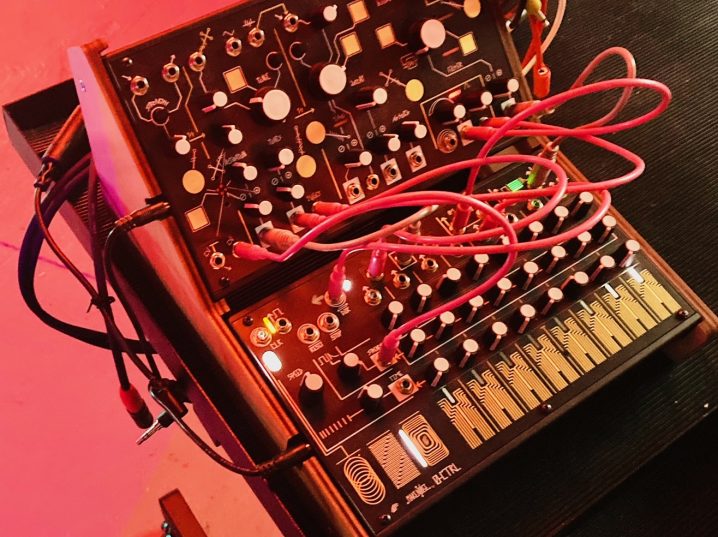
Any particular new techniques that you tried out for your new album?
This was our first collaboration and record together so everything was brand new for us. We both have our ways of working and elements we really rely on but for Helio, we had to invent our own language and process to create something that was true to our connection and not just to repeat what we do as solo composers. It was a letting go of a process and through this, we really found new ways of working and conversing inside our work. It was a challenging and lovely process.
What does your live setup look like, and what do you bring with you when you travel for an extensive tour?
Currently, we are putting that together and most likely that will include projections, guitar, some pedals, laptops, and a synth of two. We are pretty excited for Heliochrysum to get out into the world.

What is the most important environmental aspect of your current workspace and what would be a particular element that you would improve on?
For Daniel, the mood from lighting really zones him into his work, and for me, it’s all about natural light and having space to move around to listen and think. So lighting really helps us both. Maybe it’s our love of film that makes light have such an effect on us.
What can you tell us about your overall process of composition? How are the ideas born, where do they mature, and when do they finally see the light?
Typically we begin with an atmosphere from some sound or melody and then begin to build layers and collect firewood of ideas and other sounds. From there we listen and craft a structure and eventually, the piece delivers to us a story and we build on that impulse. Many times we think a piece is headed in one direction and then we create a new sound or do more takes on a melody and suddenly a whole new path reveals itself. We do our best to trust that process.
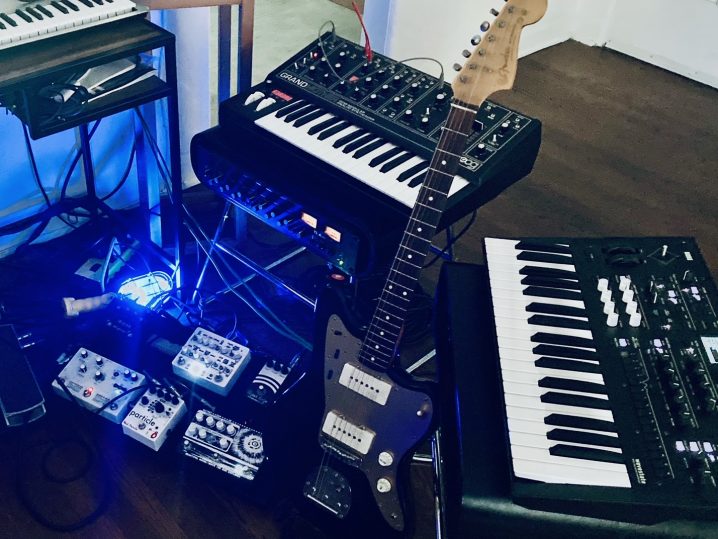
After the piece is complete, how do you audition the results? What are your reactions to hearing your music in a different context, setting, or a sound system?
For this record we would create our tracks and then listen to them on our own or spend a night making dinner having some wine or whatnot and listening to the work take notes and comparing notes… we did this for months and months until eventually we would listen to the record and had no notes. There would be nothing that would feel out of place or destroy the mood or visual element of the piece. We go over our material endlessly and really want every detail to have a purpose, its own color, and to bring its own element to the experience.
Do you ever procrastinate? If so, what do you usually find yourself doing during those times?
When we work solo we have a completely different experience and when we get together we are intensely focused… but when we do take breaks Daniel and I both spend a lot of time in the hills of Los Angeles hiking, Michael surfs a lot and Daniel spends a lot of evenings watching vintage films on 35mm. Is that what you mean by procrastination?
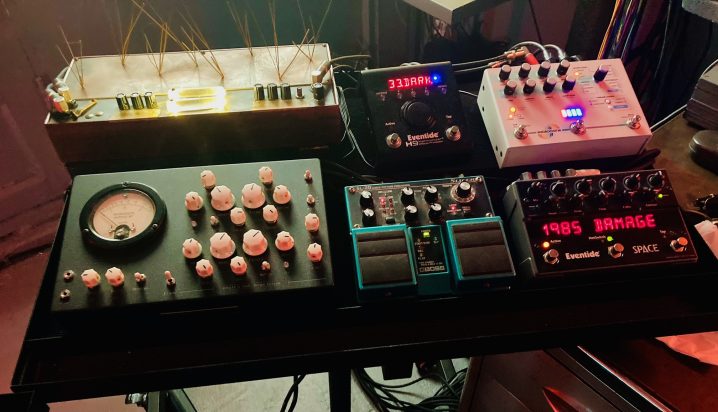
What gets you inspired?
Daniel: The light in LA, driving at night, hiking, reading, the ocean, watching films.
Michael: The ocean, surfing, making collages, watching films, reading and watching old art history documentaries. We both love listening to vinyl as well.
And finally, what are your thoughts on the state of “electronic music” today?
There have been some cool ambient projects that have come out lately and those are great to hear as well as electronics showing up in a ton of film scores we really love. What’s exciting to us in electronic music is hearing really unique sounds on some of our favorite artist’s records. “Electronic music” is such a huge term so it’s hard to narrow down. We do think technology is both a gift and a curse but when used by a talented creator it can be an epic tool. For us, electronic music allows us to create in our own environments with so many options as sound sources. So the doors for creation are wide open and we are always listening to all we can which pushes us to go even further in our own work.

